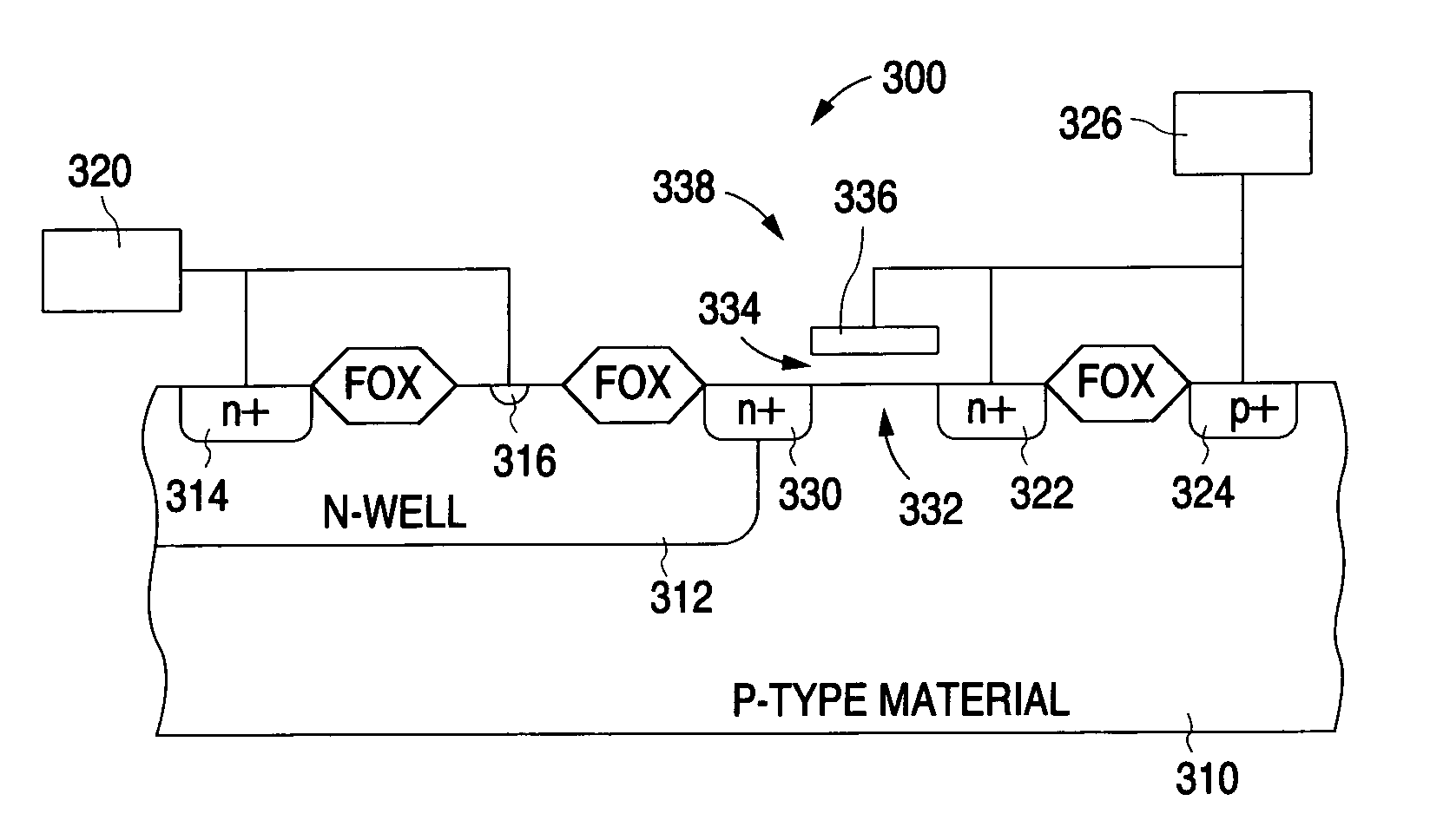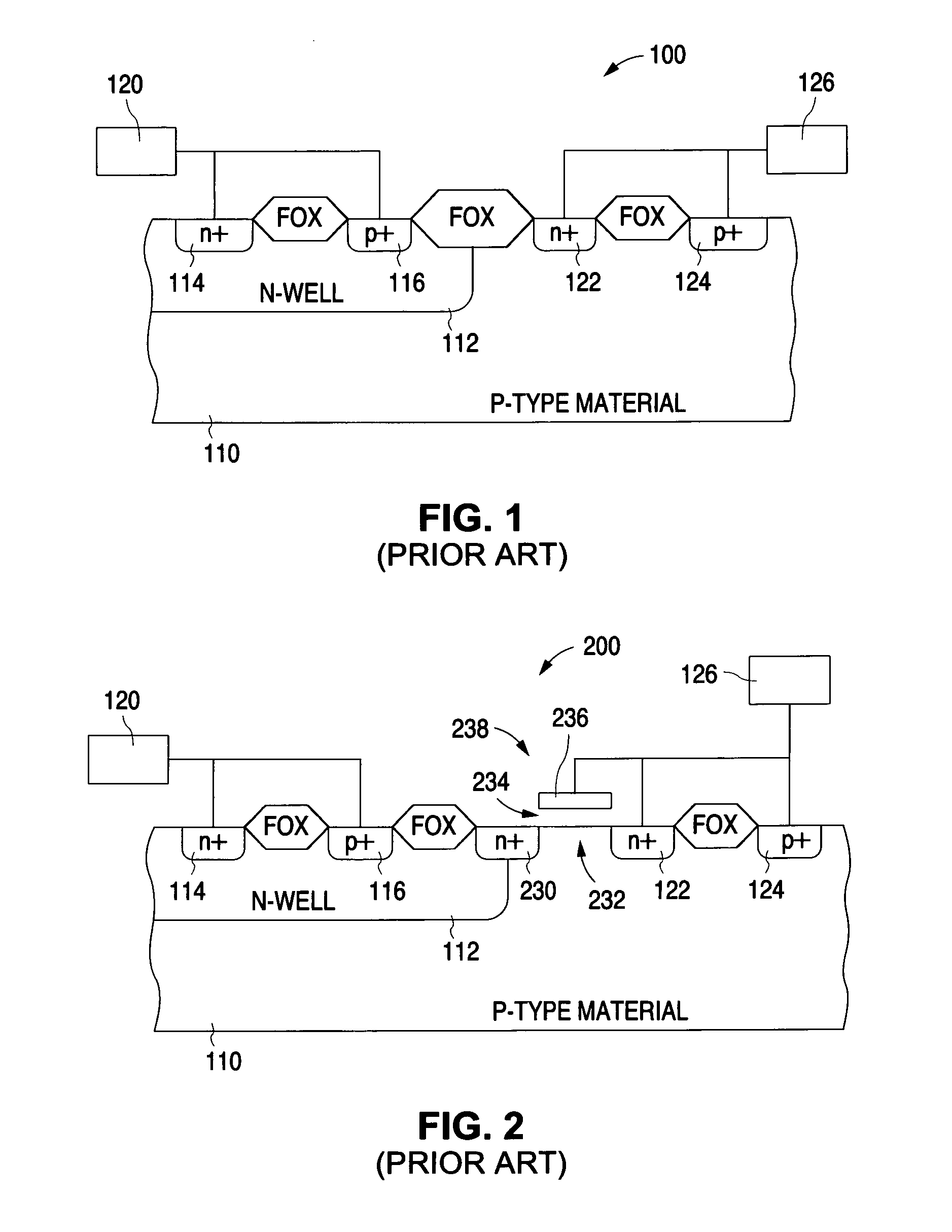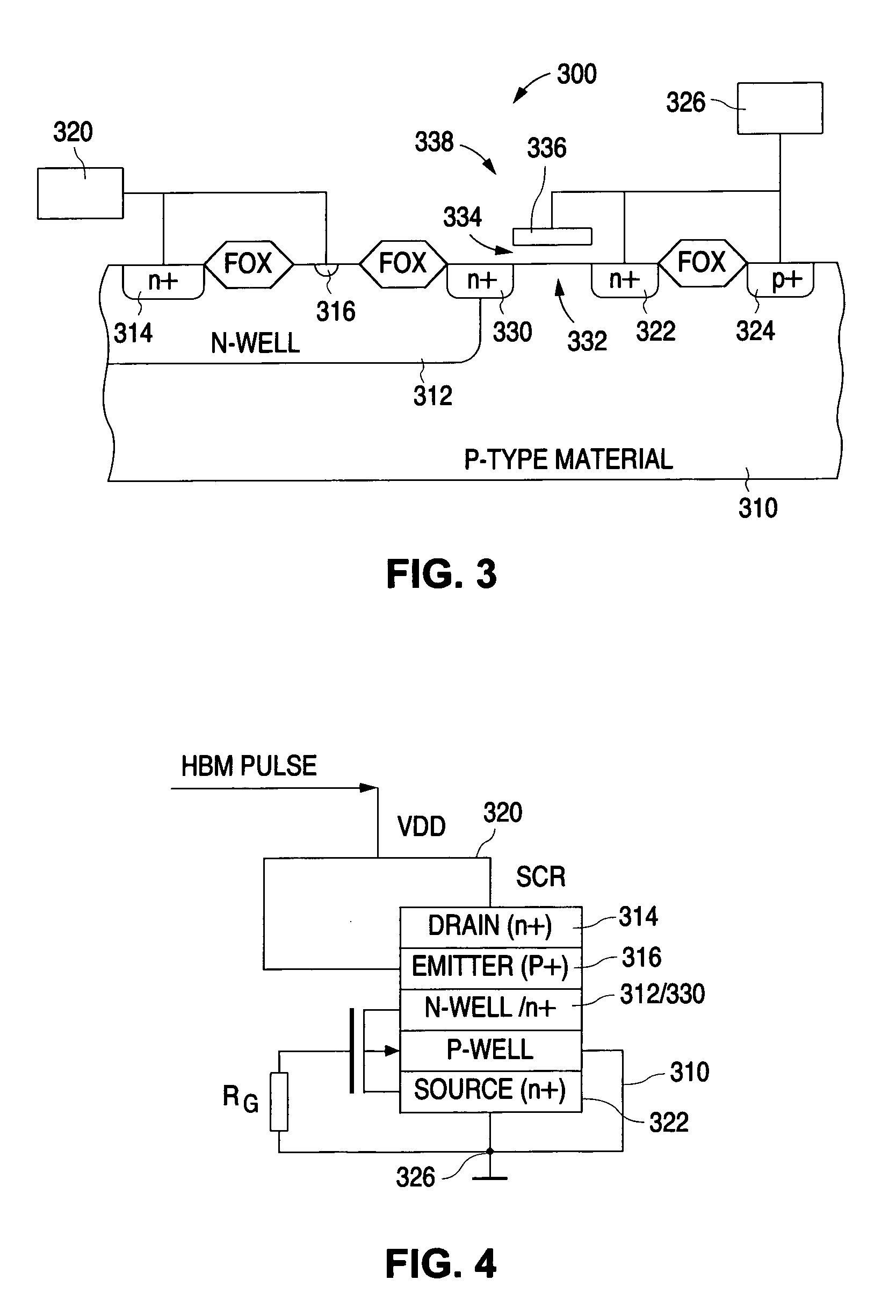High holding voltage ESD protection structure and method
a protection structure and high holding voltage technology, applied in the direction of diodes, transistors, semiconductor/solid-state device details, etc., can solve the problems of not only large ggnmos devices, damage to analog circuits, and over-voltage handling capabilities of analog circuits, so as to reduce the size of p+ emitters, increase the value of holding voltage, and high holding voltage
- Summary
- Abstract
- Description
- Claims
- Application Information
AI Technical Summary
Benefits of technology
Problems solved by technology
Method used
Image
Examples
Embodiment Construction
[0045]In order to achieve a structure having improved holding voltage characteristics than a LVTSCR and improved current density than a GGNMOS the present invention proposes using a device having the features of a SCR or LVTSCR, but wherein the dimensions of the features are changed over that of a standard LVTSCR, to achieve reduced space charge neutralization.
[0046]FIG. 3 shows a cross-sectional view that illustrates on embodiment of a LVTSCR-like device 300 in accordance with the present invention. As described in greater detail below, the holding voltage of the device 300 is increased by reducing the space charge neutralization, which is achieved by limiting the number of holes injected into the device. This, in turn, is achieved by reducing the p+ emitter junction area defined by the device 300. As shown in FIG. 3, the p+emitter of the pnp transistor of device 300 is reduced in size as compared to the conventional p+emitter 116 shown in FIG. 2.
[0047]As shown in FIG. 3, device 30...
PUM
 Login to View More
Login to View More Abstract
Description
Claims
Application Information
 Login to View More
Login to View More - R&D
- Intellectual Property
- Life Sciences
- Materials
- Tech Scout
- Unparalleled Data Quality
- Higher Quality Content
- 60% Fewer Hallucinations
Browse by: Latest US Patents, China's latest patents, Technical Efficacy Thesaurus, Application Domain, Technology Topic, Popular Technical Reports.
© 2025 PatSnap. All rights reserved.Legal|Privacy policy|Modern Slavery Act Transparency Statement|Sitemap|About US| Contact US: help@patsnap.com



